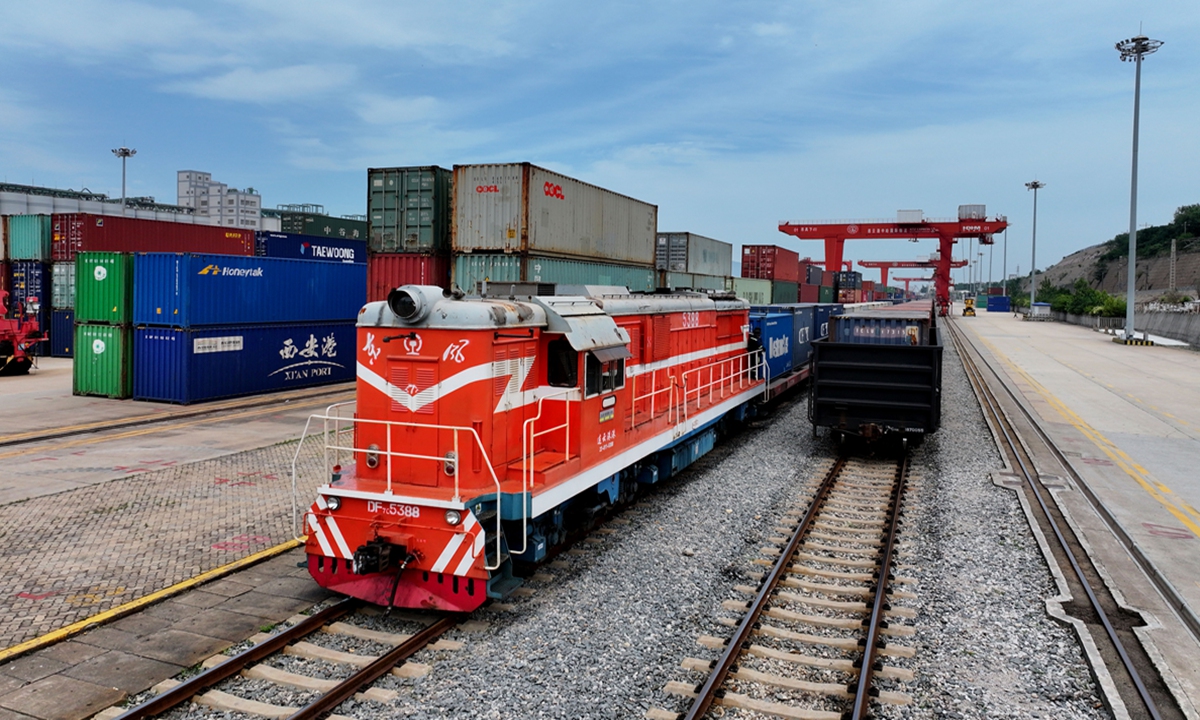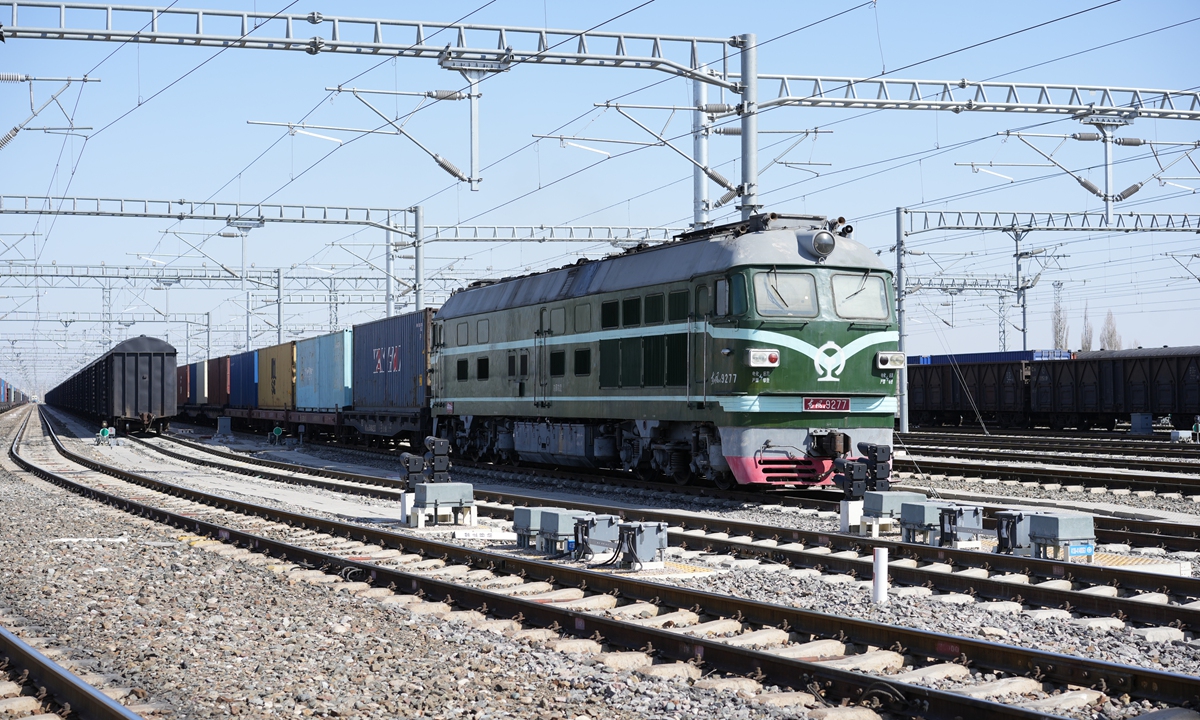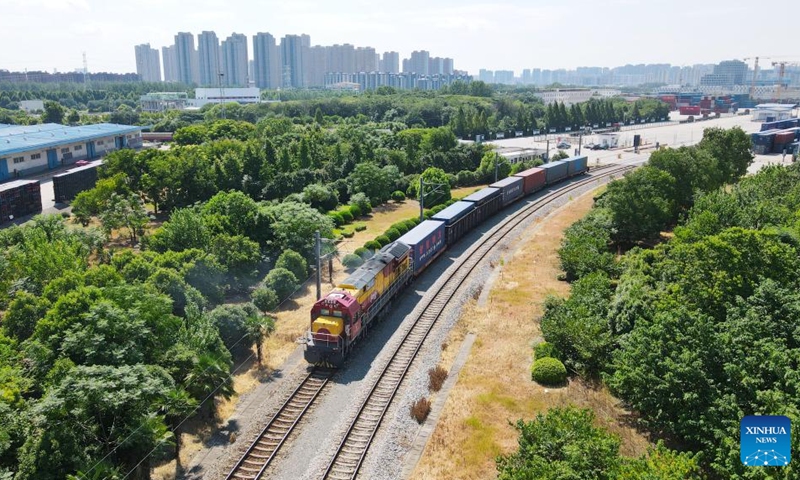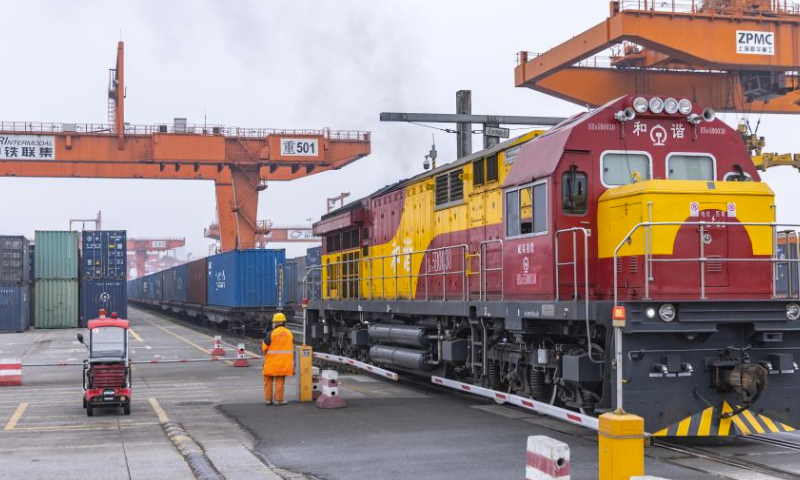China-Europe freight train runs top 110,000 on Tuesday, transporting goods worth more than $450 billion

A China-Europe freight train leaves Lianyungang, East China's Jiangsu Province, from the China-Kazakhstan logistics hub, June 10, 2025. Photo: VCG
On Tuesday morning, the No. 75052 China-Europe freight train departed from Jiaozhou Station in Qingdao, East China's Shandong Province. The departure marked a milestone, as the cumulative number of China-Europe freight trains has now exceeded 110,000, with the cumulative value of goods transported surpassing $450 billion, according to China Railway Group Co, the operator of the route.
These achievements highlight the growing role of the freight train services in facilitating economic and trade exchanges between China and Europe and demonstrate the robustness and reliability of Chinese supply chains, analysts said.
The freight rail network has expanded extensively in recent years. The network now covers 128 Chinese cities and 229 cities in 26 European countries and more than 100 cities in 11 Asian nations.
Upgrades at five major Chinese border ports and the addition of Tongjiang North Railway Port in Northeast China's Heilongjiang Province have increased the rail network's daily capacity to 184 trips.
Digitalization and streamlined processes have revolutionized the efficiency of freight operations. Digital innovations like the 95306 "digital port" and streamlined customs service help cut the clearance time to only minutes.
A total of 14 China-Europe freight train gathering centers have been established across China, accelerating the formation of an efficient transportation system.
Meanwhile, the China Railway Group Co's overseas subsidiaries in countries such as Kazakhstan, Germany and Russia, through their deepened cooperation with local railway administrations, as well as logistics, and port and freight forwarding enterprises, have ensured balanced outbound and inbound traffic with a 100-percent container utilization rate.
The China-Europe freight trains have emerged as a pivotal engine driving the prosperity of trade in the network. The expanding coverage and enhanced efficiency have exerted a profound influence on regional economic cooperation and globalization, Wang Peng, an associate research fellow at the Beijing Academy of Social Sciences, told the Global Times on Tuesday.
Express customs clearance has slashed the clearance time to within minutes, significantly reducing both the time and warehousing costs for enterprises, Wang said.
The express clearance mode has indeed improved customs efficiency, and order volumes have increased, Tommy Tan, president of Shanghai EPU Supply Chain Management Co, told the Global Times on Tuesday. Tan's company operates China-Europe freight trains to multiple European cities, including Lyon in France and Budapest in Hungary.
Jian Junbo, director of the Center for China-Europe Relations at Fudan University's Institute of International Studies, told the Global Times on Tuesday that the China-Europe freight trains have significantly boosted China's overall trade, especially exports to Europe.
In terms of stability, with numerous uncertainties plaguing maritime routes, the overland freight trains offer strong controllability, thus providing robust support for stabilizing and enhancing trade between China and Europe, Jian said.
China's trade demonstrated resilience in the first five months of 2025, with the total value rising 2.5 percent year-on-year, driven by the country's efforts to optimize its trade structure and stabilize growth. During the same period, China's trade with the EU went up 2.9 percent year-on-year to nearly 2.3 trillion yuan ($317 billion), according to data released by the General Administration of Customs on Monday.
The range of goods transported by the China-Europe freight trains has expanded remarkably, now encompassing more than 50,000 items across 53 categories.
High-value products, including vehicles, machinery and electronics, have become the mainstay of exports, making up more than 60 percent of the total in 2024. China's "new three" export items — new-energy vehicles, lithium-ion batteries and photovoltaic products — are increasingly being shipped via the trains.
"From the perspective of the commodity structure, there is significant complementarity in China-Europe trade," Jian said. "As the value-added of Chinese exports rises, their competitiveness also increases. European consumers now have access to high-quality yet affordable Chinese goods. It is hoped that both sides can further leverage the China-Europe freight trains to explore and utilize this complementarity, thus benefiting the people of both sides and creating mutual prosperity."



